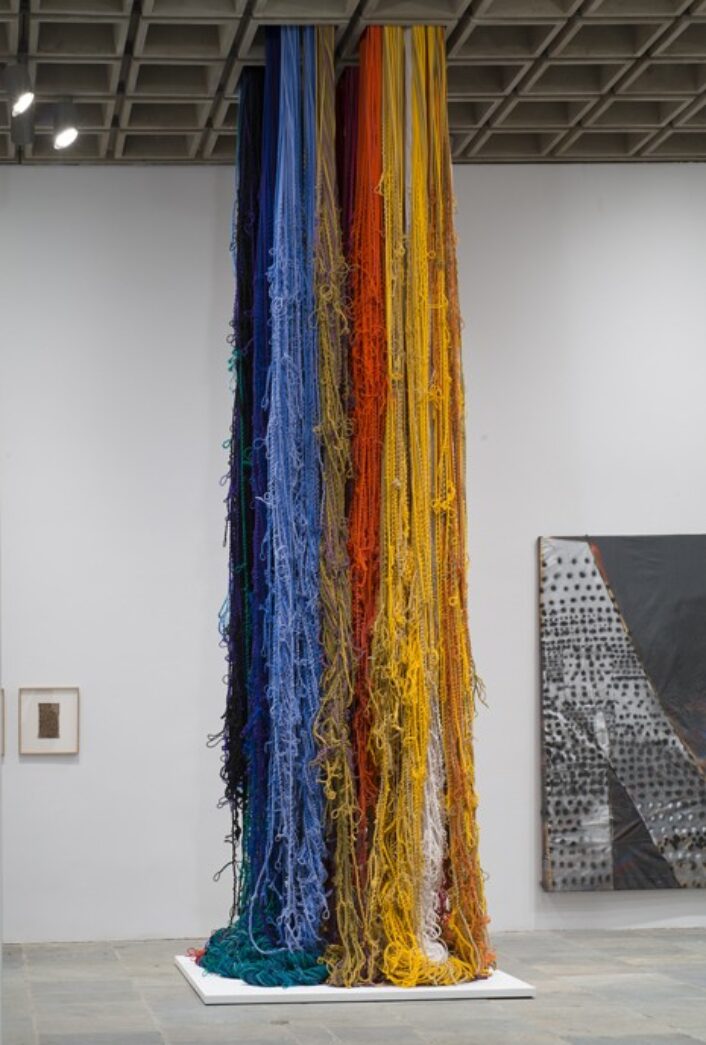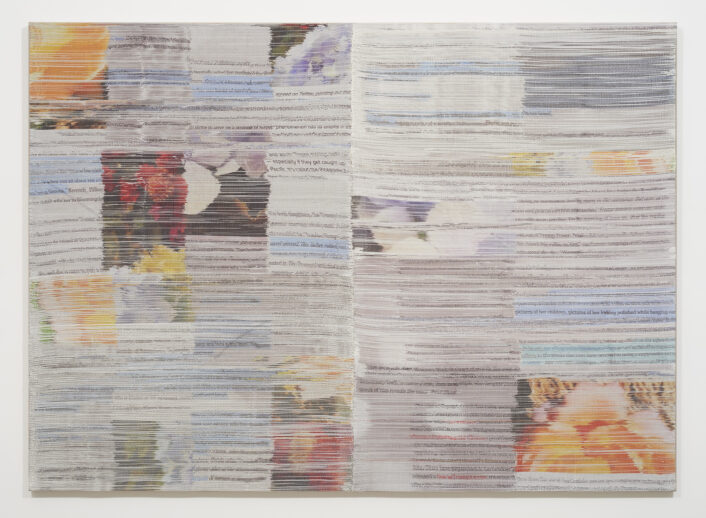Design
Mimi Jung
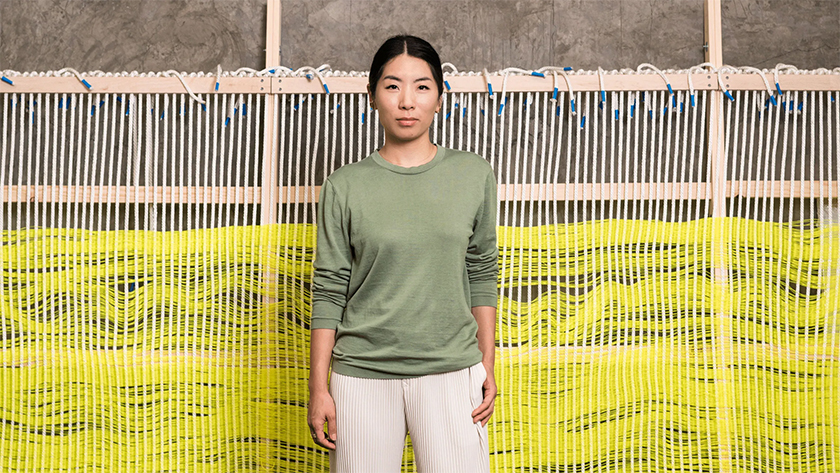
Mimi Jung in front of her sidekick, “Shadow.”
Image courtesy of: Architectural Digest, photographed by: Emily Berl
We love the work of Mimi Jung, the Los Angeles-based, Korean artist. Her unique work centers on handwoven tapestries and sculptures; it reminds us of Shiela Hicks’ work which, in itself, is a wonderful compliment. Her work is extremely personal and intimate… similar to how Jung’s surrounding landscapes evoke similar feelings.
The South Korean immigrant grew up in New York and studied fine art at Cooper Union in the city. Her interest in weaving happened accidentally ten years ago. In 2011, Jung signed up for a machine-knitting class, however this class was cancelled just prior to the start of the session. The program automatically moved her registration into a weaving class. The rest is history.
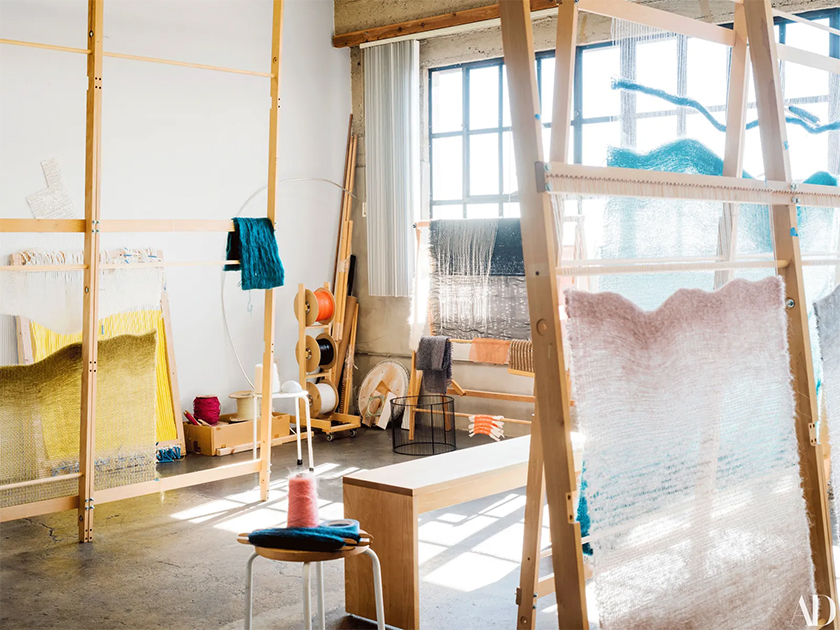
Jung’s sunlit Los Angeles studio.
Image courtesy of: Architectural Digest, photographed by: Emily Berl
From the start, Jung compared weaving to painting… for her, a loom is like a canvas. The one difference is that with weaving, you are working in a linear way. Jung’s practice is slow, methodical, and solitary. She says (courtesy of an interview with Hannah Martin for Architectural Digest), “I can work an entire day on just two inches.”
Her Los Angeles studio is filled with looms displaying pieces in different stages of completion revealed. Up until two years ago, the artist worked on commissions for designers such as Philippe Malouin and Jamie Bush. We are thrilled that she is coming into her own with new pieces that push her craft to its sculptural limits.
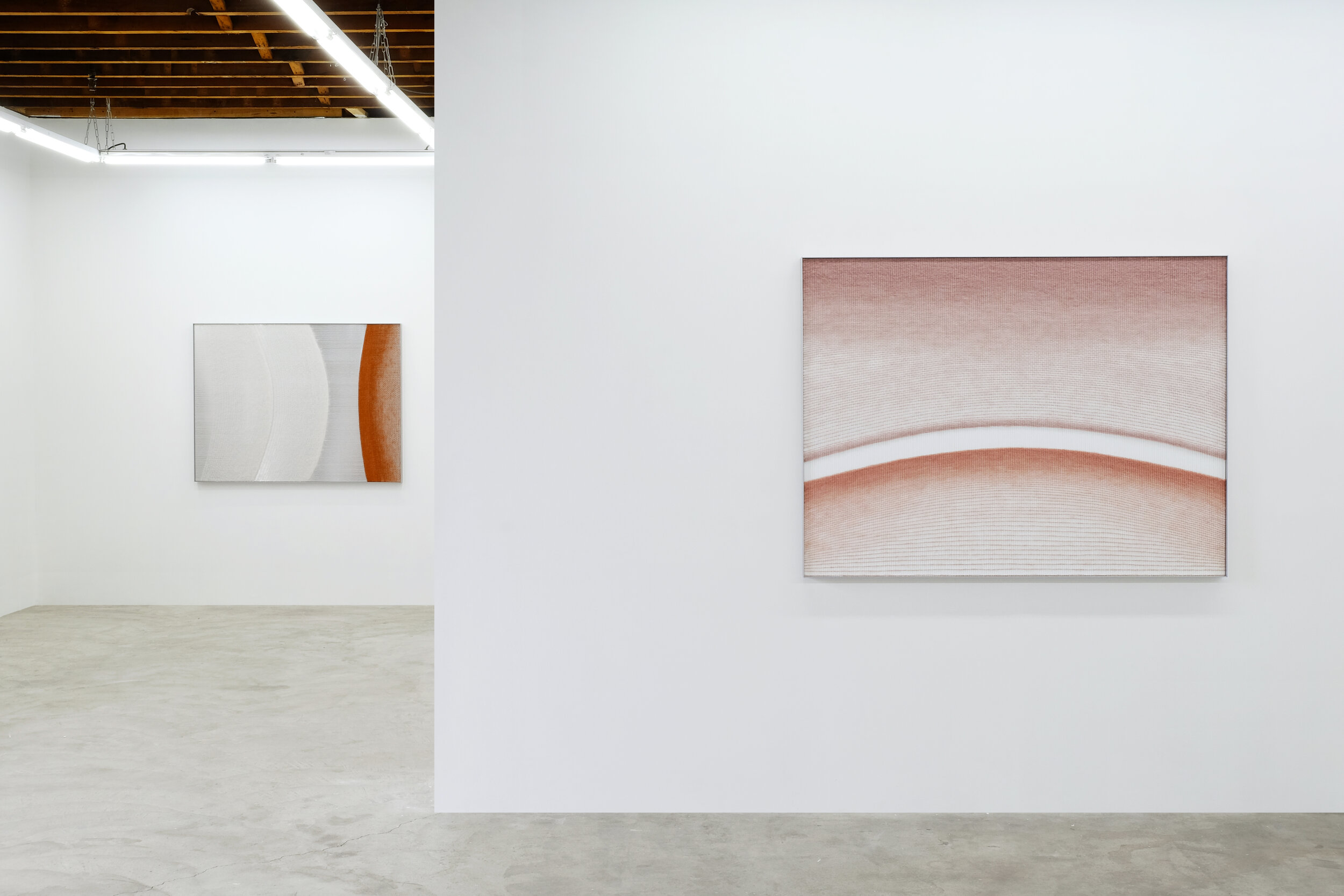
This exhibition at Carvalho Park gallery in New York City was presented October 24, 2020- January 9, 2021. It was the artist’s second exhibition with the gallery and her first solo show.
Image courtesy of: Carvalho Park
Just prior to the pandemic striking, Jung worked on a collection of new works that had an enormous personal significance on the artist. “The Subsuming Eclipse” is an interesting title… with six digits in the title, it refers to a specific four-month period of time in 2017. Up until this point, the dates were further apart as not each date is significant.
These four months changed Jung in a profound way; they centered around the time Jung spent with her foster daughter. Now almost four years later, the work is a direct response to the emotions that occurred during that time period. The element, the ellipse, is both perfect and imperfect. Her grid holds color, light, tactility, and movement in varying degrees of palpability.
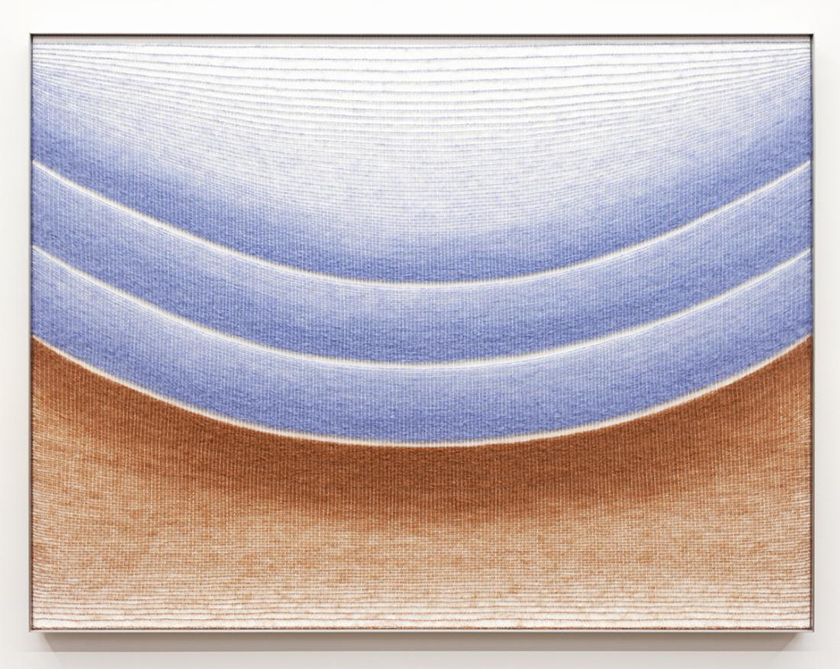
“102417 Pale Blue and Brown Ellipses,” 2020. Mohair, cotton, painted plywood and aluminum frame.
Dimensions are: 47″ x 62″ x 2″
Image courtesy of: Art and Object
Unique to Jung’s work is that the tonal gradation tells a story. The graduation in her work describes a story of the space between the weaves. The space is just as important as the color. In “The Subsuming Ellipse,” color holds a personal significance. She says (courtesy of a Surface Magazine article with Ryan Waddoups), “My first visceral nightmare as a child was a blast of color. I woke up soaked in sweat, screaming; my dream was an infinite field of flowing purple. Color is never taken for granted in my work.”
Usually, Jung works on several pieces at a time. However this collection was mentally exhausting; thus, she worked on “The Subsuming Ellipse” completely uninterrupted. She said that she would work on the loom during daytime hours and then she would engage in long discussions with Carvalho Park’s owner, Jennifer Carvalho. The memories that were brought up would be directly paired to a work; essentially, the memories became imprinted on the loom in a natural progression.
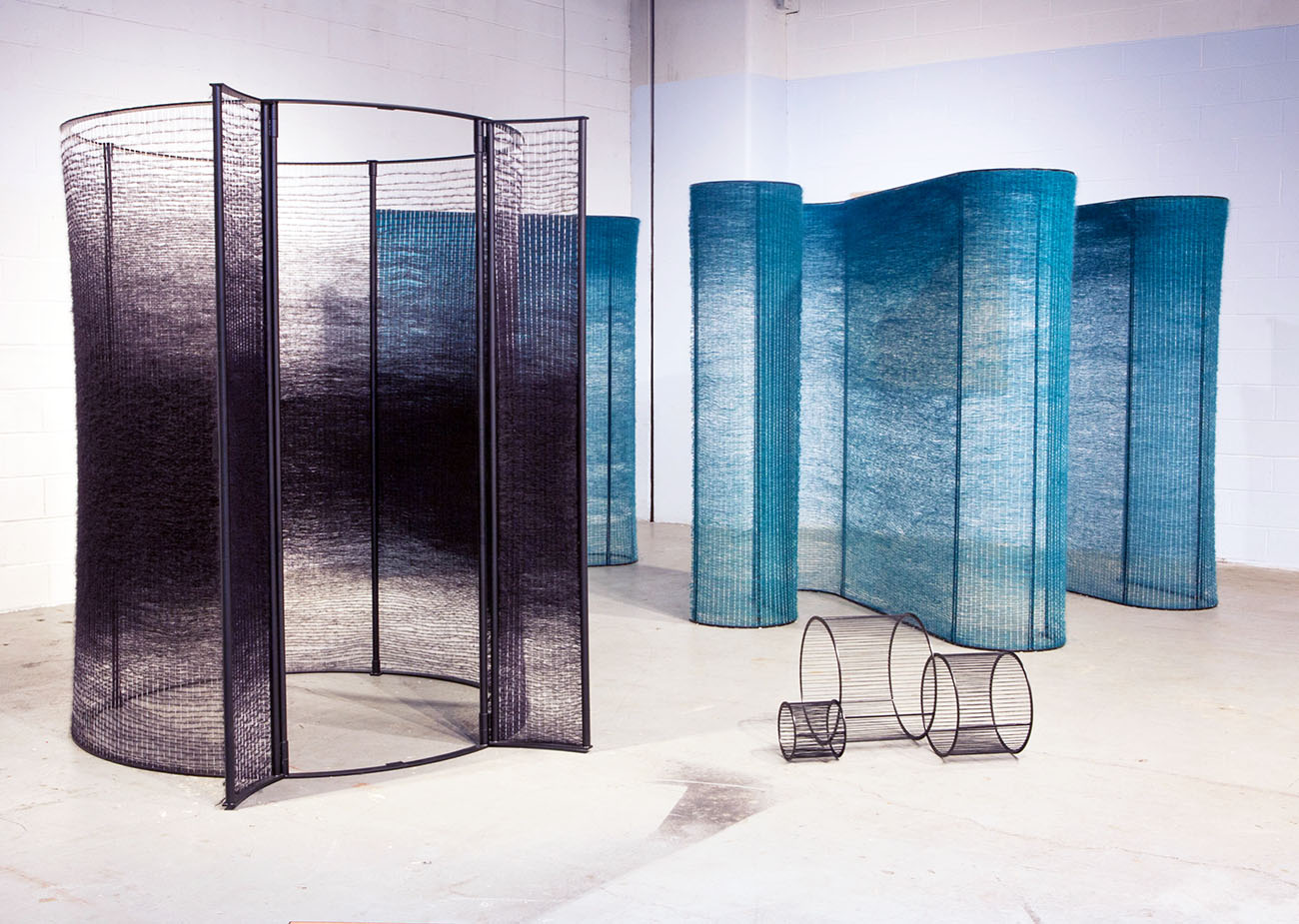
In 2015, Jung created furniture and objects under the line, Brook & Lyn, with her husband, Greg Inglin. Under her own name, Jung fabricated mohair weavings and mounts them on powder-coated steel frames.
Image courtesy of: Sight Unseen
Jung is also passionate about giving back and paying it forward. She hosts a program called Happy Trails Art Start for children in the foster care system. This free art program for at-risk teens allows them opportunities to express themselves through art, and among other same-aged peers. Jung was also able to introduce the students to many creative speakers, provide professional art supplies, and arrange portfolio reviews.
Next for Jung is completing a residency at the John Michael Kohler Arts Center that was cut short due to the pandemic. She also has plans for a residency at the Josef and Anni Albers Foundation. The artist is especially looking forward to this as the experience centers around solitude. Finally, a large installation for a public space in Korea is pending; this has been on Jung’s professional bucket list so we hope she’s able to fulfill this dream in 2021!
